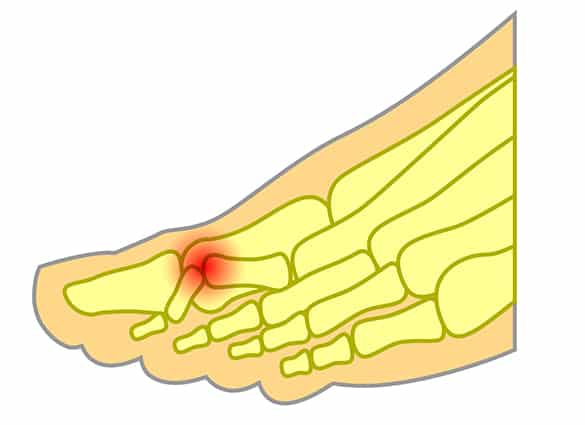A hammertoe can occur on any toe
Hammertoes occur when abnormalities in foot function cause the ligaments and tendons to tighten, resulting in the toe joints bending until the toe is permanently buckled.
A hammertoe can occur on any toe. When it first begins to develop, the affected toe remains flexible, and will straighten when pressure is applied to the buckled area. As time passes, however, the toe can become permanently contracted and eventually becomes rigid.
Pain from hammertoes usually occurs when shoes rub on the prominent portion of the toe, resulting in inflammation and calluses, corns or ulceration. When a hammertoe becomes rigid, painful calluses on the bottom of the foot may develop because of the increased pressure caused by the contracted toe.


Early treatment
It is important to see your podiatrist as early as possible if you have or are developing a hammertoe. Your treatment will depend on the severity of your condition, and may include:
- trimming or padding of calluses or corns
- splints or straps to realign your toe
- changing to footwear with more room in the toe box
- custom-made prescription orthotics, to both reduce the pressure on your toe and to help your toe and foot joints to function correctly.
If your hammertoe fails to respond to conservative treatment, your podiatrist may recommend surgery to straighten your toe.
If you have a hammertoe, or are concerned you may be developing one, contact us.

